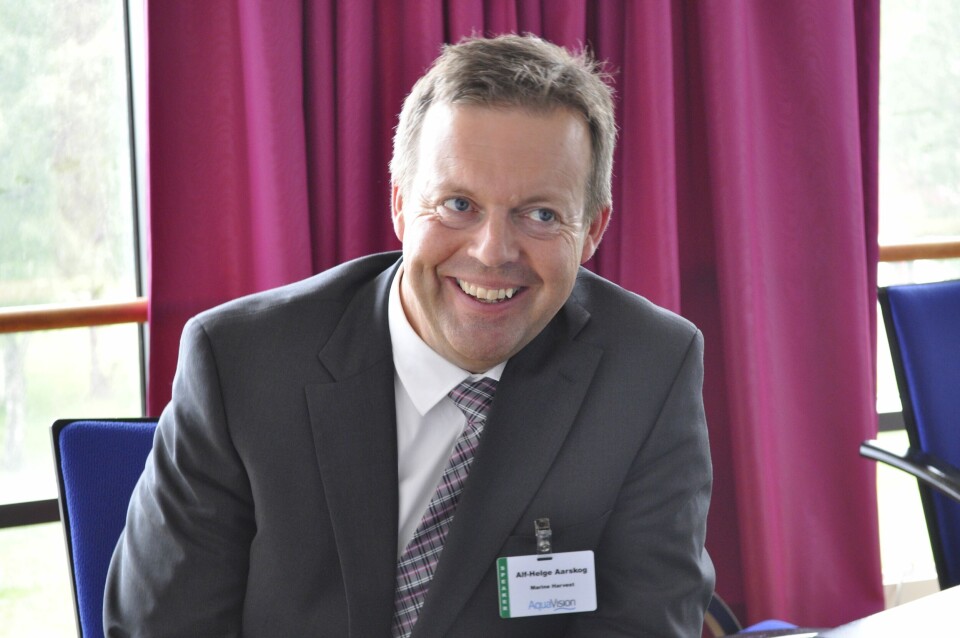
Newcomer’s 300,000 tonne feed year
Marine Harvest could reach 300,000 tonnes of feed production at their mill in Bjugn this year – enough to provide 87-88% of MH Norway’s feed needs - an impressive amount after just 2 years in operation.
“The mill was built with an estimated capacity of 220,000 tonnes annually, but this year we’re nearing 300,000 tonnes,” Marine Harvest’s CEO, Alf-Helge Aarskog, told kyst.no.
Marine Harvest delivers self-produced salmon feed to all its facilities along the coast. The raw material is purchased from around the world, delivered to the facility in Bjugn and distributed as finished products from there.
“We are well positioned in that Bjugn has a central location in relation to our production sites. That means efficient logistics,” he explains to kyst.no.
Scottish challenges
The CEO says that, at the moment, Scottish salmon producers suffer from their distance from the major feed mills, but he feels that the establishment of the company’s new feed plant on the Isle of Skye will improve feed distribution to MH’s Scottish sites.
“Our new factory on the west of Scotland will revolutionise the industry there. We are building on the west side because that's where salmon production mainly takes place. The other feed manufacturers are located on the east side,” he says and points out a number of negative logistical consequences, with more transportation and costly logistics.
“As at Bjugn, in Scotland we will be bringing raw materials into the factory from around the world, while the finished product will be distributed by boat to the producers, meaning minimal logistical challenges. We can be far more efficient and economical than the other feed producing companies,” he concluded.






















































